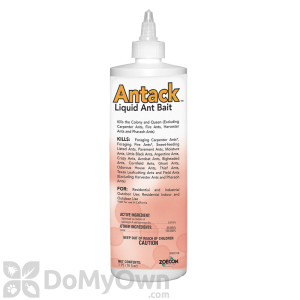Important Things to Know About Pharaoh Ant Control:
- Baiting is the only effective method for elimination of control of Pharaoh Ants
- Residual spray treatments are not effective with Pharaoh Ants because they result in the colony budding and contaminate bait stations.
- Baits must be placed systematically (not randomly) in order to be effective
- In buildings with severe infestation, total elimination may take up to a year of persistent baiting.
Step 1) Inspection: Locate Ant Trails
Locating Pharaoh Ant trails is essential to proper placement of baits for total elimination. If baits are placed randomly, the Pharaoh Ants may not encounter them at all and the baiting program will fail. Pharaoh Ants tend to trail along the edges of door moldings and baseboards, and underneath carpet edges. If trails are not readily available, the following Honey & Peanut Butter Bait Method will encourage trail formation:
1) Place a large dab of honey and a dab of peanut butter side by side on a flat note card or piece of tin foil.
2) Place the card or foil in a corner on the floor close to where you notice the greatest ant activity-typically in the corners where two walls meet, on window sills, and near door frames.
3) Place as many cards as needed, in every place where activity in noticed or suspected.
Within about two hours, the ants will locate the food source and form a steady trail of workers to and from the colony. The cards that receive the most attention will indicate where toxic baits should be placed for the greatest success, since odor trails will already have been placed to those locations. Cards that receive little (2 to 3 ants) or no acceptance should be removed.
Step 2) Bait Placement
Pharaoh Ant baits should be placed systematically and strategically for the greatest success. Effective bait placement locations include: in corners where two walls meet, along the edges of door moldings and baseboards, and in the corners of windowsills, and those areas where bait cards (see step 1) received the greatest attention. Baits placed in the middle of walls are floors are not effective.
Recommended Baits for Indoor Control:
- Maxforce Ant Bait Stations - Maxforce Ant Bait Stations start to kill ants in just six hours, and tests show 90% population reductions in just four days.
- Advance 360A Dual Choice Ant Bait Stations - Offers both a sweet and protein-based bait, an ideal combination for Pharaoh Ants that tend to switch food preferences.
- Advance Liquid Ant Bait- A balanced formulation of sugar and water that ants need and desire. The bait will kill the entire colony.
When large numbers of Pharaoh Ants are visible on the exterior of the building, we recommend the use of Maxforce Granular Ant Bait for exterior control.
Step 3) Monitor & Refresh Baits as needed
Every effective baiting program requires frequent monitoring throughout the weeks that follow initial bait placement. The following steps will help you to effectively monitor your baits and to keep them fresh as needed.
- When you first place your baits, record each bait location on paper.
- Check each bait placement for the first few days to make sure the bait is being accepted. You will know it is accepted if trailing persists, if you notice ants near the bait, or if the bait supply has visibly diminished.
- Once bait acceptance is confirmed, the placement may be checked weekly and refresh baits when 1) the bait supply has completely disappeared, 2) four or more weeks have passed (the bait will start to get stale at this point), or, 3) the ants no longer seem to be taking the bait. Sometimes Pharaoh Ants will change their food preferences in the middle of a baiting program. At this point, a new bait with a different food base (sweet, protein, etc) from the first should be substituted until one is accepted.
Additional Methods for Ant Prevention & Control
- Practice good sanitation.
- Limit food preparation and consumption to one or two areas of the home that are cleaned daily.
- Eliminate gaps and cracks in the foundation, baseboards, window frames, and door frames with caulk or other appropriate material to eliminate ant entryways.
- Materials such as stacked or piled lumber, stones, bricks, leaf litter, heavy mulch, and other debris that serve as potential ant harborages should be removed as far from the structure as possible.
- Trim the branches of trees, shrubs, and other vegetation that may serve as ant highways so they do not touch the structure.
- Repair leaky pipes and faucets.
Products
All Ant Control products






